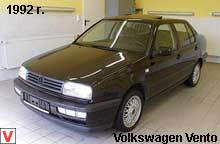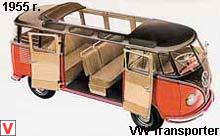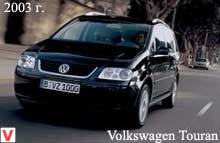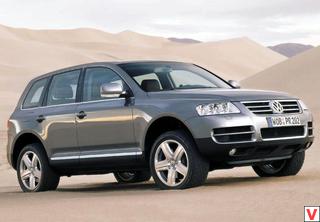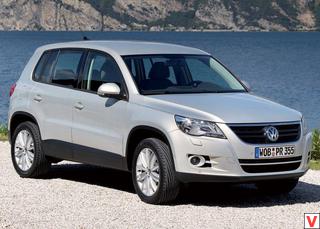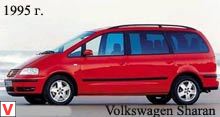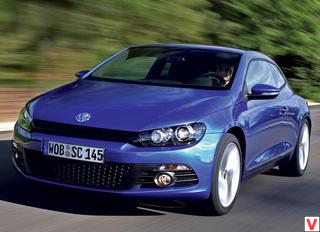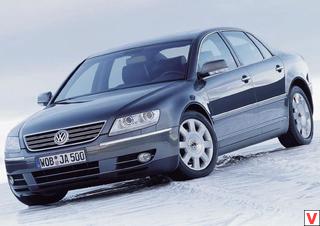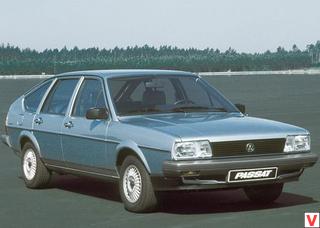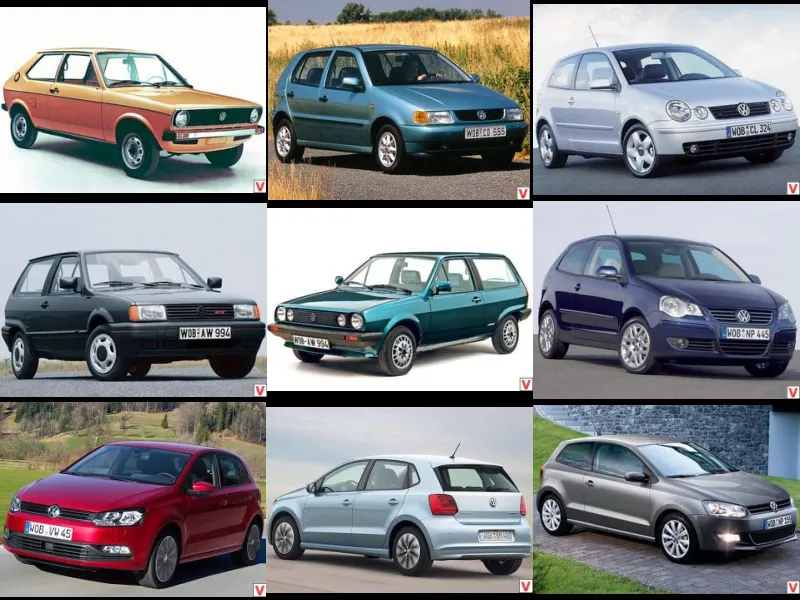
The debut of Polo took place in 1975 at the automobile exhibition in Hanover. It became the third front wheel drive car in the friendly Volkswagen family after the Golf and Passat. Polo is based on the Audi 50. The author of the design was the famous Marcello Gandini. The first Polo was an economical option (price DM7500) with a cube engine of just 40 hp. and the ability to reach speeds of up to 132 km / h. A year later, the “luxury” version of the Polo L rolled off the assembly line. It was installed on a 1.1 liter engine.
50 hp This model was very popular at the time. In January 1977, a 2-door Derby sedan was created on the basis of the Polo, aptly nicknamed by journalists as the “Polo” + trunk = “Derby”. The volume of the trunk, by the way, was 515 liters. The car immediately gained popularity among European buyers, and he had several reasons for that.
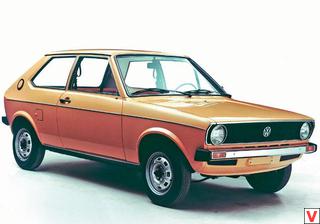
Firstly, the car had a spacious and comfortable interior and a practical body, secondly, the technical characteristics were excellent, and thirdly, the car was affordable, which was its most important quality. The engines on the model of the first generation put carburetor 0.9 - 1.3-liter capacity of 40-60 hp. Manual transmission - only 4-speed. Only in the period from 1977-1981, about half a million cars were produced. The high degree of popularity of the Polo is due to a diverse range of engines and high build quality. Six years after the debut of the model, the light was seen by the second generation Polo.
It was distinguished by a large number of body modifications, the practical hatchback with a vertical rear wall, introduced in August 1981, was considered the base. Derby Sedan joined only in October of the same year. The three-door version debuted in September 1982 with a large inclination of the rear wall of the body was called the Coupe. All three versions enjoyed good demand.
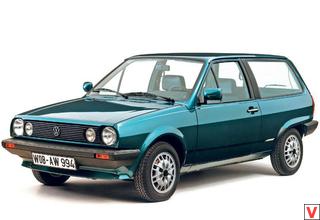
In the fall of 1985, the debut of the sports version of the Coupe GT G40. 115 hp engine allowed to accelerate the car to a hundred in 9 seconds. The maximum speed was 195 km / h. In October 1990, in the course of modernization, most of the design and ergonomic deficiencies were corrected. Externally, the restyled Polo was distinguished by a more streamlined front end with large rectangular headlights. The interior was redesigned in a new way. At the same time, a 1.4-liter 48-horsepower diesel engine appeared, with which the fuel consumption in the city did not exceed 5.5 l / 100 km.
Manual gearbox replaced by 5-speed. In the power range of cars 1990 - 1994 release four injection engines with a capacity of 45 to 113 hp. (carburetor versions by 1990 were ousted from the production program) and the diesel engine mentioned above. In general, this generation was accompanied by high demand. For 13 years of release, it sold over 3 mil.
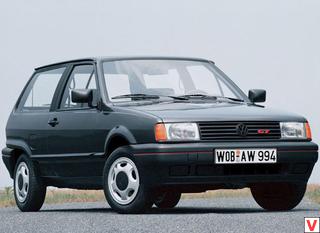
instances. Although the model was popular, but morally, by the beginning of the 90s it was already outdated, and in 1994 it was replaced with the model of the next generation Polo III, created on a completely new platform. The third generation premiere took place in Paris in 1994. From this year, all Polo hatchbacks have become not only 3- but also 5-door. The overall dimensions and mass of the Polo have grown quite noticeably over the past two decades. Thus, the length was 3715 against 3500 mm in the first model, and the curb weight increased from 685 to 880 kg.
In 1995, a model with a sedan was returned to the model range, called the Polo Classic (in previous generations, the sedan version was called the Derby). It was created on the platform of Seat Cordoba. Unlike hatchbacks manufactured in Germany, this model is assembled in Spain at the Seat factory.
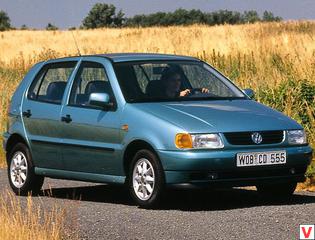
The sedans are 390 mm longer than the 3- and 5-door hatchbacks, and their trunk is much more capacious - in the “traveling” state 455 versus 245 liters, respectively. In 1997, the Polo Variant station wagon appeared, created on the basis of the Seat Cordoba Vario station wagon. Much more solid was the trim. Visibility from the inside at the highest level. Gamma engines included gasoline and diesel engines with a capacity of 45 to 110 hp At the top of the model range was a modification of the Polo GTI with a 1.6-liter engine producing 125 hp. The maximum speed of a car with such an engine was 205 km / h, and acceleration to "hundreds" was 8.0 seconds.
Hatchback distinguished best-in-class aerodynamics: Cx = 0.32. After 5 years from the start of production of the Polo III, the creators upgraded the 3- and 5-door hatchbacks, but the sedan and wagon were not affected by the changes. Note that the post-styled versions were produced for a total of 2.5 years and were a springboard for the design “running in” of new solutions for the following models. Volkswagen has updated about 60% of the parts, while the car looks virtually unchanged. The headlights and grille, the bumpers and housings of exterior mirrors were painted in the body color a little differently.
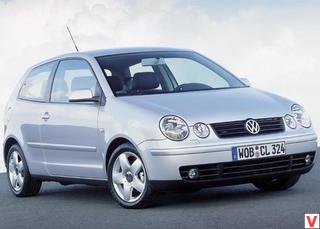
But in the cabin there were more significant changes: the dashboard was the same as that of Lupo, the dials got edging, and the "torpedo" got a more rounded shape. Volkswagen Polo III was produced in the period from 1994 to 2001. In September 2001, the premiere of the fourth-generation Polo hatchbacks took place at the Frankfurt Motor Show. The fourth generation Polo has noticeably changed both in style and in technical equipment. At the same time, the car has significantly grown: it stretched by as much as 400 mm in length, became 90 mm wider, 120 mm higher.
Built model on the platform of Skoda Fabia. A characteristic feature of the exterior Polo IV were 4 round headlights. It offers a choice of two three-cylinder petrol engines (1.2 l - 54 or 64 hp), a pair of four-cylinder (1.4 l - 75 or 101 hp) and three diesel engines with capacity from 64 to 101 liters. from. In addition to the manual transmission, it is possible to install a four-stage “automatic”, but only with a 75-horsepower engine. The appearance of the new Polo is solid, prestigious and laconic. Around the same simple style solved its interior.
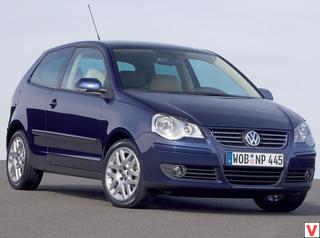
The car is made using high-quality laser welding technology, which allows minimizing the gaps between body parts and, as a consequence, the noise level at high speeds. Very good safety parameters, ensured by the torsion-proof body structure, are complemented by a rich equipment of active and passive safety. The elements of passive safety is a newly developed system of air bags. The airbag for the driver is 64 liters, for the front passenger - 95 liters, and side airbags - 12 liters. Active safety is provided by an electro-hydraulic power steering and four-channel ABS, which are part of the standard equipment.
In this case, the power steering changes the force on the steering wheel depending on the speed and weight of the car, so that in all situations the driver does not lose the steering feel. In 2003, the Polo Saloon sedan and the youth version of the Polo Fun complemented the Volkswagen range. From its predecessors, the new Polo sedan differs in a completely revised body structure from the mounts to the rear. It is 28 cm longer than the 5-door hatchback. Staying in the cabin has become even more comfortable (especially in the area of rear passengers), and the trunk volume has increased to 432 liters.
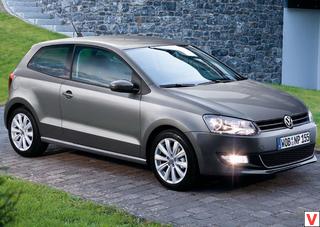
Much attention is paid to the anticorrosion protection - the Polo sedan body is fully galvanized. For this model, two levels of equipment and four engines are proposed: two 47 and 55 kW diesel engines and two petrol engines, developing 55 and 74 kW, respectively. The main features of the Polo Fun steel: increased by 20 mm ground clearance, new front and rear skirts, trim wheel arches and plastic doorways, as well as 17-inch aluminum wheels with tires 215/40 ZR17. The Polo Fun range of engines consists of four petrol engines ranging from 55 to 100 hp, including an FSI injection engine, as well as two diesel engines ranging from 75 to 100 hp.
In terms of the number of options and the quality of interior materials, the Polo IV was inferior to the Golf and Passat. Naturally, this affected the price tags and, as a result, sales. Volkswagen Polo IV failed to gain popularity in Europe. The model sold much worse than previous generations of Polo. The famous television company Top Gear, which in 1998 named the VW Polo III the best super mini car, this time stated a complete failure. In the rankings based on polls, the Volkswagen Polo IV seriously lost to many of its competitors, such as the Ford Fiesta, Renault Clio, Peugeot 206. In 2005, Volskwagen updated the Polo IV generation. The main changes affected, above all, appearance.
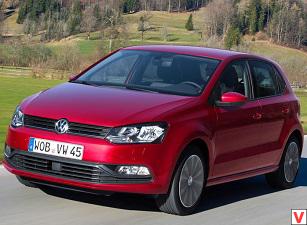
The company's designer (Walter de Silva) changed the design of the "stern", the front end, but the model did not become a hit. Restyling only slightly revived the demand for Polo. In 2007, the updated VW Polo Classic appeared. True, the popularity in Russia, he has not received. The fifth-generation Volkswagen Polo was unveiled at the Geneva Motor Show in the spring of 2009 and received the title "Car of the Year 2010" in Europe. Polo V was created on the VQ platform PQ25, which already produces Ibiza from the Spanish subsidiary Seat.
The length is 3970 mm, the width is 1682, the height is 1485. The wheelbase is 2470 mm, the track is 1463/1456. When fully seated in places, the capacity of the trunk is 280 liters, but with the rear seat folded down (including in the 40/60 ratio - in the Comfortline version) it increases to 950 liters. The curb weight of the 5-door “hatchback” with a 1.2-liter petrol 6-valve is from 1070 kg, and with a 90-strong turbodiesel and DSG from 1180 kg.

Polo has become more dynamic, stylish and modern. Exterior has inherent inherent predecessor masculinity and even a little aggression. The updated front end gives the car fast-moving features. The front optics has changed, the striking V-shaped radiator grille underlines the strong character, the aerodynamic characteristics of exterior mirrors with integrated direction indicators are improved. The central design element of the back is the lamps with the main lenses of a round shape. Their shape emotionally corresponds to the shape of the headlights, which gives the rear of the new items vigor and personality. Dynamic appearance of the car also emphasize the wheels and tires.
Volkswagen offers a wide selection of steel or alloy wheels that make the Polo look more solid. A wide range of body colors also opens up space for creativity: six metallic lacquers, including a new color - Silver Silver Bird, four types of lacquer coating with a “mother-of-pearl” effect, including the new blue - Olympia. Polo tires from 175 / 70R14 in the most modest versions up to 185 / 60R15 (more powerful with gasoline and diesel engines). And for an extra charge mounted tires size 215 / 40R on 17-inch alloy wheels.
Inside, everything is expectedly reserved and at the same time tasteful: the plastic of the dashboard pleasant-looking and tactile, comfortable seats, logical controls for various functions and systems — everything is as practical as possible. The driver's seat is comfortable, moderately hard, already in the “base” is height adjustable, the range of adjustments is enough for both miniature and rather tall drivers. The wheel is regulated both on height, and on a departure. The line of engines Volkswagen Polo 2009 opens with a petrol 1.2-liter 6-klapannikom engine with 60 hp The maximum power of the same engine, but with a 12-valve timing - 70 horsepower.
Whereas the 1.39-liter 12-valve “four” develops up to 86 hp. The main innovation under the hood Polo V - "subcompact" TSI with direct fuel injection into the combustion chambers, turbocharging and water-to-air "intercooler". This 1.2 liter engine delivers 105 hp.
In addition to gasoline engines, a 1.6-liter TDI CR turbodiesel with an electronically controlled common rail fuel injection system and a particulate filter is also offered. Volkswagen Polo engines have minimal fuel consumption and they have a reduced level of emission of harmful substances. The engines are coupled with a manual 5-speed gearbox, except for TSI, which comes with a 6-speed "handle". And for an extra charge, some of them are equipped with a 7-step “robotic” DSG (2 clutches, switching without breaking the power flow). But the suspension remained, in general, the same: the front is still the same McPherson suspension, and the rear is on the conjugate trailing levers.
In March 2014, at the Geneva Motor Show, the German automaker introduced the updated Polo hatchback. This is not a new generation, but easy restyling of the 5th generation. The changes affected the exterior, interior, engine range, as well as the car received a number of systems that were previously available only in Volkswagen Golf.
In short, the list of innovations is quite extensive, although there are few external changes. Cardinal reincarnations at Polo 2014 did not happen. The shape of the headlights has not changed, but in expensive trim low beam transferred to the diodes - in this class, this is the first time. The look was also transformed by a new front bumper with a smooth grille and a chrome line that combines visually fog lights that are now slightly higher than before. In the grille has changed only the location of the crossbars. Revised and rear bumper. The profile was limited to five new sets of discs enlarged by inch. There were also additional colors of coloring.
From the dimensions only the length has changed, and that only slightly - plus 2 mm. Salon has changed more than the appearance. But in style, he remained laconic and restrained. Polo 2014 received a new design steering wheel and a revised instrument panel with a center console, where the modular infotainment system with a touch screen, familiar to owners of the Golf, is installed, which allows, like smartphones and tablets, to scroll through tabs with a flick of the finger.
Tachometer and speedometer are located deeper than before. Between them - the on-board computer display, which shows all the basic information: fuel consumption, travel time, mileage, etc. Everything in terms of design is combined and assembled intelligently and stylishly. The feeling that really worked on every, even the smallest detail. Perfectly combined glossy and matte plastic elements on the steering wheel and center console. The wheel is D-shaped, adjustable in height and reach.
The most expensive bundling Fresh offers 15-inch alloy wheels, climate control, seats with good lateral support, LED room lighting, steel pedals, lights for the feet in the front, fog lights with a turning light, and a multifunctional on-board display. For an additional fee, the list of equipment can be expanded with navigation, sunroof and other options. In addition to fairly extensive changes in the interior, the entire range of engines underwent a revision. The new line complies with the Euro-6 standard and consists of four TSI (MPI) and three TDI, with three or four cylinders in the power range from 60 to 110 horsepower, at the beginning of sales.
The initial in the engine range are now a pair of atmospheric three-cylinder 1.0 engines, developing 60 and 75 hp. They replaced the engine 1.2 l. Instead of the former “aspirated” 1.4, a deformed version of the 1.2 TSI blower unit is proposed, issuing 90 “horses” (five more than it was). The standard version of the same engine also received an increase of five horsepower - up to 110 hp The 1.4 TSI engine, equipped with a system for shutting off part of the cylinders at partial loads, added 10 horses at once and now develops 150 hp. An updated version of the Polo GTI is equipped with a 1.4-liter engine with a capacity of 192 hp, which is 12 more power than a dorestayling machine.
But, more importantly, the “charged” Polo received a manual transmission as an alternative to the seven-speed DSG “robot”. Diesel engines also did not go unheeded. The previous "four" 1.2 and 1.6 are replaced by three-cylinder 1.4 diesel engines in versions with 75, 90 and 105 horsepower. Depending on the chosen motor, the car is equipped with a five or six-speed "mechanics" or a DSG robotized transmission with seven gears. Fuel economy is one of the priority tasks for engines made according to the Blue Motion concept.
So the 75-strong diesel in the BlueMotion version will spend only 3.2 liters of fuel per 100 kilometers, and the DSG model with a 90-horsepower engine and dual-clutch gearbox will spend only 3.4 liters on a hundred kilometers, instead of 4.3 l / 100 km for the previous model. 60 hp petrol engine consumes 4.6 liters per 100 km (previously 5.5), and the TSI BlueMotion turbo version does 4.1 liters per hundred with three cylinders and a volume of 1.0 liter. Innovation for a compact hatchback is a security system that locks the wheels for braking in the event of an accident, which reduces the kinetic energy, preventing a second collision.
The system will warn the driver in case of danger and is able to control the cruise control, which automatically adjusts to the speed of the flow.
